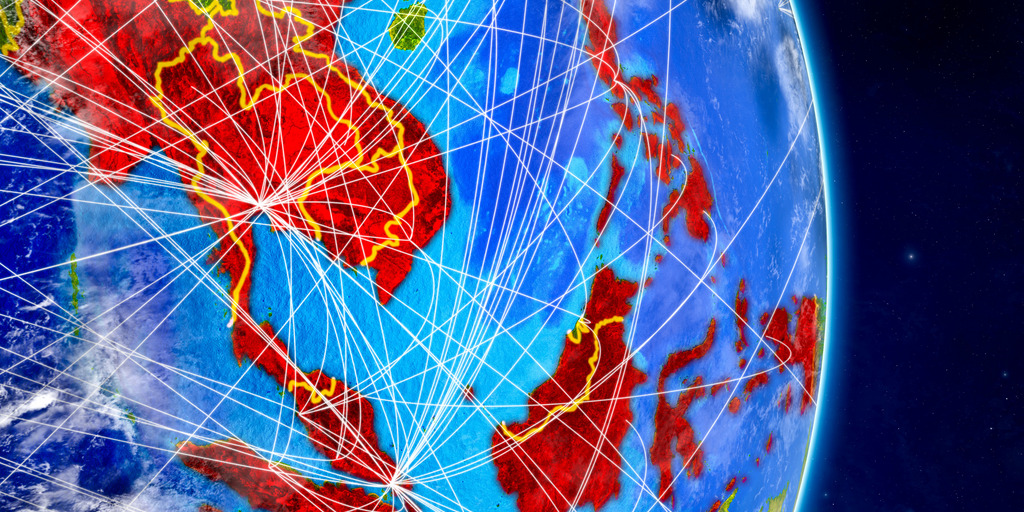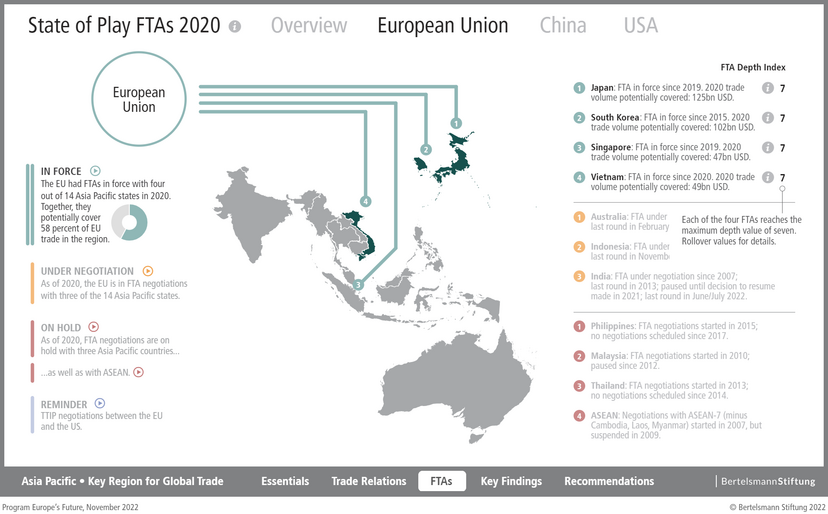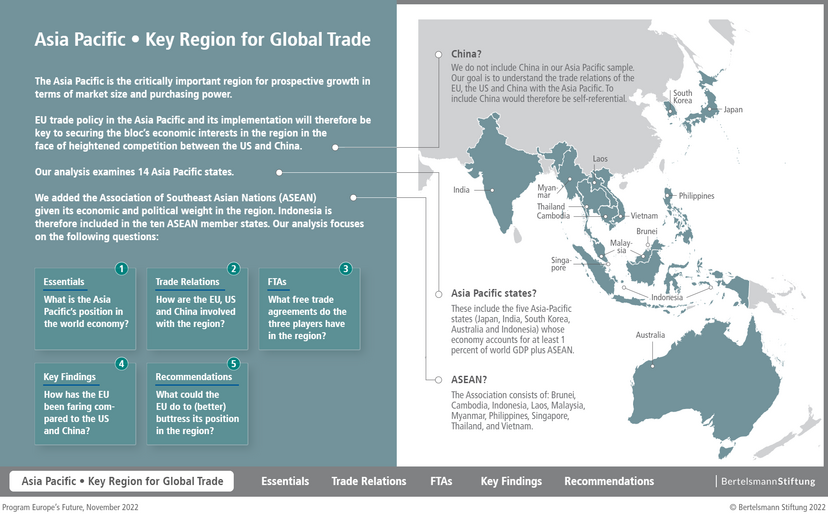Even without China, the countries of the Asia Pacific represent 30 percent of the world population, 20 percent of world GDP (purchasing power parity) and 18 percent of world trade. The region has developed into a key region for prospective growth in terms of market size and purchasing power. On top of that, major lifelines of global trade run through its waters. Consequently, the three big economic players, China, the United States and the EU, are vying for power and influence in this important region. “Given the growing systemic rivalry with China, it is vital for the economic and political interests of the EU to pivot more strongly toward the Asia Pacific, especially as to the much-discussed diversification of trade away from China,” says Cora Jungbluth, China expert at Bertelsmann Stiftung.
As the multilateral trade liberalization process under the umbrella of the World Trade Organization is stalling, bilateral free trade agreements (FTAs) are the second-best option to foster deeper trade integration and incentivize trade with the respective partner economies.







